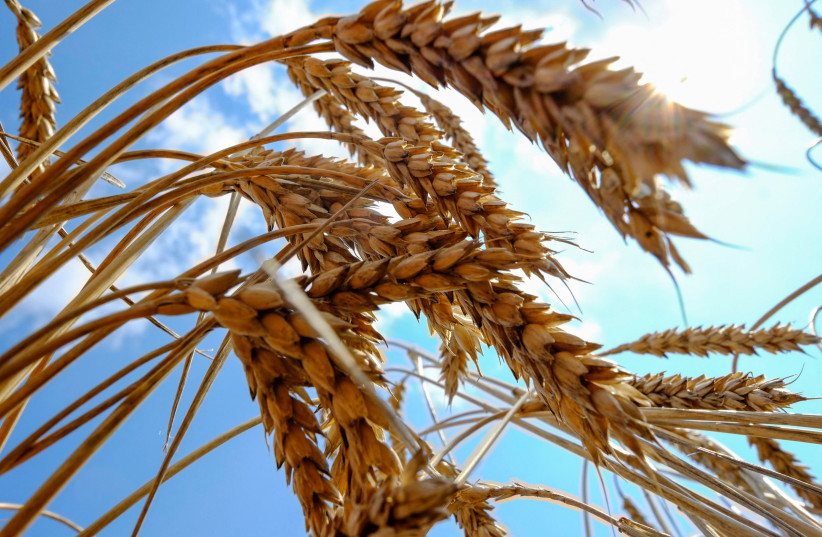An international team of scientists found that the right number of copies of a specific group of genes can stimulate longer root growth.
By JUDY SIEGEL-ITZKOVICH FEBRUARY 26, 2023

(photo credit: REUTERS/VINCENT MUNDY)
Growing wheat in drought conditions to make bread that could feed the hungry could become easier in the future, thanks to new genetic research at the University of Haifa and the University of California at Davis.
An international team of scientists found that the right number of copies of a specific group of genes can stimulate longer root growth, enabling wheat plants to pull water from deeper supplies.
The resulting plants have more biomass and produce higher grain yield, according to a paper just published in the prestigious journal Nature Communications under the title, “Dosage differences in 12-oxophytodienoate reductase genes modulate wheat root growth.”
Researchers have new tools to modify wheat plants
The research provides novel tools to modify wheat-root architecture to withstand dry conditions, said Gilad Gabay, a postdoctoral researcher in the plant sciences department at UC Davis and the first author of the paper.
“Roots play a very important role in plants,” he said. “The root absorbs the water and the nutrients to support plants growth. This finding is a useful tool to engineer root systems to improve yield under drought conditions in wheat. In light of the importance of wheat for the global population and global warming that increases more and more, the discovery is of great importance that will allow wheat to grow in widespread climate conditions,” he added.
Wild Emmer wheat (credit: RAZ AVNI OF TAU)
Much has been done to improve wheat production in recent years, but losses from water stress can erase other improvements. Plants that can adapt to low water conditions but have increased yield will be key to growing enough food for a growing population in the face of global warming, he continued.
The discovery of gene family OPRIII
Until now, little has been known about the genes that affect the root structure of wheat. The discovery of the gene family – known as OPRIII – and that different copies of these genes affect root length is a significant step, said Prof. Jorge Dubcovsky, the project leader in the lab where Gabay works. “The duplication of the OPRIII genes results in increased production of a plant hormone called jasmonic acid – found in several plants including jasmine – that causes, among other processes, the accelerated production of lateral roots,” Dubcovsky said. “Different dosages of these genes can be used to obtain different roots.”
To get longer roots, the team of researchers used CRISPR gene editing technology to eliminate some of the OPRIII genes that were duplicated in wheat lines with shorter roots. By contrast, increasing the copies of these genes caused shorter and more branched roots, but inserting a rye chromosome that resulted in decreased OPRIII wheat genes caused longer roots.
“Fine-tuning the dosage of the OPRIII genes can allow us to engineer root systems that are adapted to drought, to normal conditions, to different scenarios,” Gabay explained. Knowing the right combination of genes means researchers can search for wheat varieties that have those natural variations and breed for release to growers planting in low-water environments.
To date, regulation in most Western countries does not allow genetic improvement through artificial interventions to change gene expression. Faced with this limitation, scientists can transfer the garden using natural hybrids of existing varieties
https://www.jpost.com/business-and-innovation/tech-and-start-ups/article-732757

